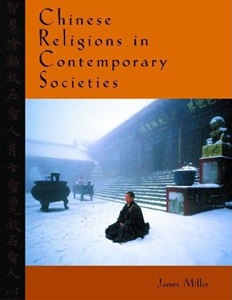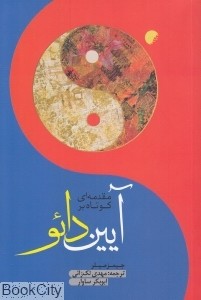As China overtakes Japan to be recognized as the world’s second largest economy, it is inevitable that Chinese religions will undergo change and transformation. But since Marx infamously compared the social function of religion to that of a narcotic, religion has consistently been framed in the modern imagination as backwards, anti-modern, and anti-science. China’s modernizers, likewise, have viewed religion as a problem to be overcome in the quest to build the new China, and their view has become part of the mainstream amongst Chinese youth. In Chinese Religions in Contemporary Societies, I told a story about a lecture that I gave in Shanghai several years ago: one of the students was shocked to learn that I studied Chinese religions, and asked me, incredulously, why on earth someone would spend time studying China’s religions!
Of course it is entirely ironic that the divisive narrative that frames religion as part of the past has also been taken up by some religious institutions who would seek to return human civilization to some mythic ideal that most likely never existed as an empirical fact. Fundamentalists and secular modernists often share the same framework about the absolute disjunction between modernity and science on the one hand, and religious tradition on the other.
But what if this story about the place of religion in the modern world is recognized for what it is: a story? Recognizing that modernity is its own story—a cultural narrative like any other—places religions in a new light.
In that regard, I would like to point out two stories about Daoism that have been in the news recently. The first is that Wong Tai Sin temple in Hong Kong has created a new electronic prayer hall in which prayer requests are submitted on paper slips and deities respond by lighting up with LED lights and emitting artificial smoke. As Patrick Brzeski reports in the Wall Street Journal, this temple administration defends this technological innovation not just as a way to attract new visitors but as more healthy and more environmentally friendly:
Lee Yiu-fai, chairman of Sik Sik Yuen and the chief planner of the new prayer room, named Tai Sui Yuenchen Hall, says he sought to create a more comfortable, healthful and modern Taoist environment, free from the pervasive incense smoke that often chokes the alters of traditional temples. Temple staff have been touting the eco-friendliness of the new facility’s energy-saving LED lighting and its smoke-reduction policy — burnt offerings inside the hall are limited to one small low-smoke incense stick. That contrasts with the atmosphere at the original and main altar, just above the new one, where templegoers burn large incendiary joss sticks by the handful.
The second story, which has not been reported in the news media so far, is that the International Taoist Tai Chi Society’s main temple near Toronto has recently installed 48 solar panels that generate 10kW of green energy, which is fed into the Ontario power grid. This green tech investment parallels similar moves in China being promoted by the Chinese Daoist Association’s commitment to ecological issues.
While I have no doubt that a range of motives lay behind the decisions to invest in technology at both these institutions, two things for me stand out. The first is that both institutions are touting the environmentally friendly aspect of their technological innovations. That is to say, investment in new technologies for Daoists is made more acceptable when it is seen as an environmental benefit. I think that this is to be explained in part because many religious people across the world see environmental protection as a serious ethical obligation. Daoists in particular have a real historical and ideological affinity for taking nature as an object of religious concern. It is part of Daoism’s DNA to take nature seriously, and this makes it not particularly surprising that Daoists should make green technology innovations.
In fact, Daoism has a long history of engaging with science and technology. The pioneering work of Joseph Needham advocated an affinity between Daoism and science, and this argument has been newly advanced in a thoroughly detailled way by Jiang Sheng of Shandong University who recently published (in Chinese) a series of volumes on this topic. Daoists invented accurate, portable, water clocks for use in meditation, and were pioneers in a wide range of scientific fields. While this may still be a far cry from installing LED statues or solar panels in temples, it does go some way to counter the cultural narrative of secular modernity that religion and technology do not go together.




